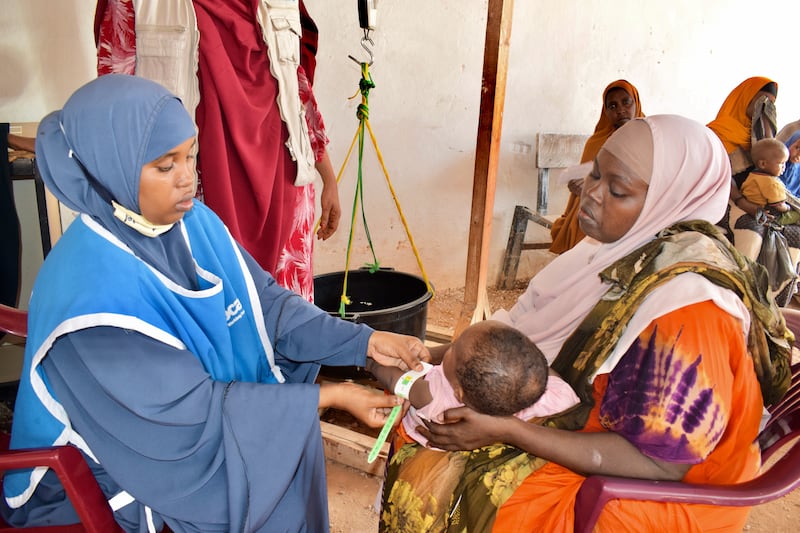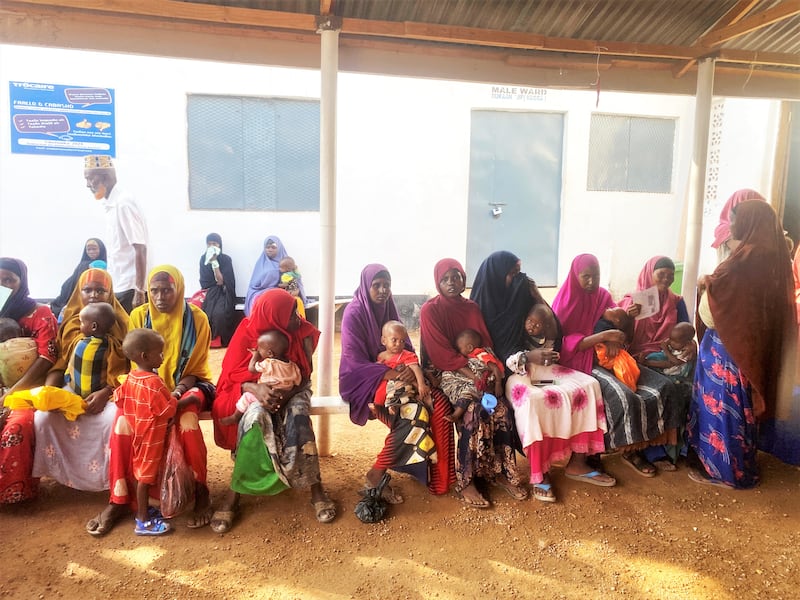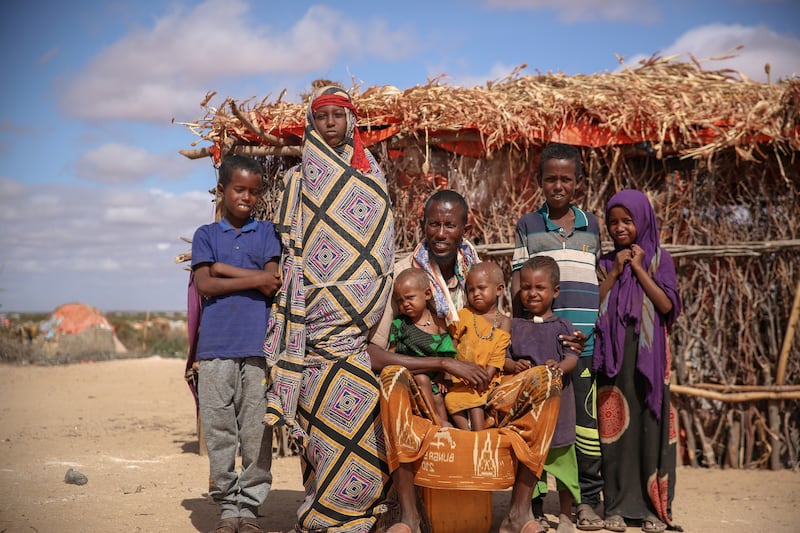For three decades, the people of Somalia have suffered an immiserating cycle of conflict, drought and famine.
Dalkey-born aid worker Paul Healy, a former priest and teacher, first came to east Africa as a volunteer in 1997, to help the fight against Aids/HIV in Kenya.
The depth of need in the region kept him there, and six years ago he joined the Somalia programme.
Today, Healy is Trócaire’s Somalia country director. The fact that he is based over the border, in Kenya, is a clear indication, if one were needed, of just how dangerous Somalia remains today. Large parts of Gedo, the region in southern central Somalia where Trócaire works, are controlled by armed groups, including Islamist insurgents al-Shabaab.
READ MORE
Thirty-plus years of conflict have left 3.8 million people internally displaced, with many leaving their rural homes to move to major towns and cities for food and safety. But food scarcity is rife, with famine in 1992 and again 2011 adding to the woes of ongoing feudal struggles and intermittent civil war.
Now climate change is taking an already difficult situation and making it worse. It is also taking a deadly toll on those who are least-equipped to cope – mothers, babies and children.

The Mother of Health
When Trócaire first arrived in Somalia its state institutions had fallen apart and there were no non-governmental organisations (NGOs) on the ground to help.
As part of Trócaire’s humanitarian response, the charity started out by talking to community elders, asking how best to help. “We are here at the invitation of the local people, with their permission. There is no other way of operating here. Our legitimacy comes through the local community,” Healy explains.
Trócaire centres are the only providers of services for mothers looking for safe delivery of their babies
Working with these elders, Trócaire opened its first maternity health facility in the Gedo region in 1992. Since then, it has established four more hospitals and more than 20 outreach health centres. It also runs preventative health and nutrition programmes at community level throughout the region, which is bigger than Ireland.
Around 240,000 people pass through its health centre doors annually, accessing nutrition and health services. The majority arrive on foot after a difficult and dangerous journey from their rural homes. Healy describes it as “the long walk” to maternal and infant care.
It’s a journey they make because Trócaire centres are the only providers of services for mothers looking for safe delivery of their babies. It’s why the organisation is known fondly by locals as “the Mother of Health”.

Protecting mothers and children
In Somalia, Trócaire focuses on maternal and neonatal health, nutrition support for under-fives, and management of childhood illnesses.
The need is stark. Somalia, which has a population of 17 million, has one of the highest maternal death rates in the world. An estimated 1.8 million children are acutely malnourished, with 500,000 of these classed as severely malnourished, according to the United Nations Office for the Co-ordination of Humanitarian Affairs (OCHA).
Trócaire screens and treats young children, and provides them with nutrition supplements. It promotes good hygiene practices, and trains mothers on how to identify acute malnutrition early, so they can get their child to a nutrition centre for help in time.
For Healy, a father of three, the single most devastating aspect of his job is when a child arrives at a centre only to die because they didn’t get there sooner. “It is brutal”, he says.
He is increasingly worried for the future. For two years Somalia has been in the grip of a devastating hunger crisis, after five rainy seasons in a row in which it either didn’t rain enough or not at all.
More than 1.4 million people since January 2022, and 3.8 million cumulatively) have had to leave their homes and villages to seek support in urban centres as a result. Millions more are living a life in which hunger is a daily reality. Trócaire has already seen a dramatic increase in the numbers coming to its health and outreach centres.
“It is estimated that between six and eight million people, or half the population, are now food insecure,” explains Healy.

Climate change is making a tough situation harder
Over the past two years, he has seen the hideous consequences of climate change. “Families have to make the long walk and leave their homes because there is literally nothing left for them. Not a crop in a field, not an animal left alive,” he says.
The rains did come this year and partially refilled the underground aquifers. “That is great, but there were no animals left to feed. We work with pastoralists who raise goats and camels. Their animals have all died, and there is no milk for the children,” he adds.
Children are increasingly coming into health centres just hours from death. Last year, an estimated 45,000 Somalis died as a result of complications related to malnutrition, such as cholera or measles.
“The consequences of drought are that people drink dirty water, they can’t live hygienically, they suffer micronutrient deficiency. Mothers, pregnant women and children under five, which we focus on, suffer the worst,” Healy says.
Because we work through elders, ownership of the projects we contribute to is always local
Climate change is exacerbating the problem. When the rains finally came this year, it came in shorter more intense bursts. Water rushed off parched ground, leading to flooding. Some 250,000 people alone have been displaced by flooding this year.
During his three decades in east Africa, Healy has seen climate change at first hand.
“People here used to see drought every four or five years but it was predictable. Now it’s every second or third year and isn’t,” he explains.
“The old ways of life for people who lived on the range lands for thousands of years are gone, leaving pastoralists living in peri-urban, slum-like conditions. These people contributed nothing to climate change. Their carbon footprint is minuscule. Yet they carry the most serious consequences of it.”

How Trócaire helps with your help
Healy has a team of 64 people on the ground in Somalia, the vast majority of whom are Trócaire technical staff and district and local elders. These in turn recruit staff at community level, around 500 people in all, whose work is also funded by Trócaire.
Somalia is a dangerous place for aid workers. Healy has to protect his team’s physical health through the provision of safe houses and security personnel. He safeguards their mental wellbeing with eight-week rotations out of the country, as well as counselling services.
It is estimated that between six and eight million people, or half the population, are now food insecure
Despite the hardships, Trócaire will help for as long as its help is needed. “We have been providing support through local partners for 50 years, since 1973,” Healy explains.
“Because we work through elders, ownership of the projects we contribute to is always local. We know future resilience is about building local power, having local authority and local ownership. Trócaire is there as a technical organisation bringing technical skills to empower communities.”
Its aim is always to orchestrate its own exit, a sign of success. Unfortunately, in Somalia today, a successful exit looks further away than ever. “And the single biggest complicating factor in that is climate change,” Healy says.
For 50 years, Trócaire has been working with supporters, partners and communities to tackle the underlying causes of poverty and injustice and respond to the crises they create. Together we bring about positive and lasting change for a just world. Discover more here













